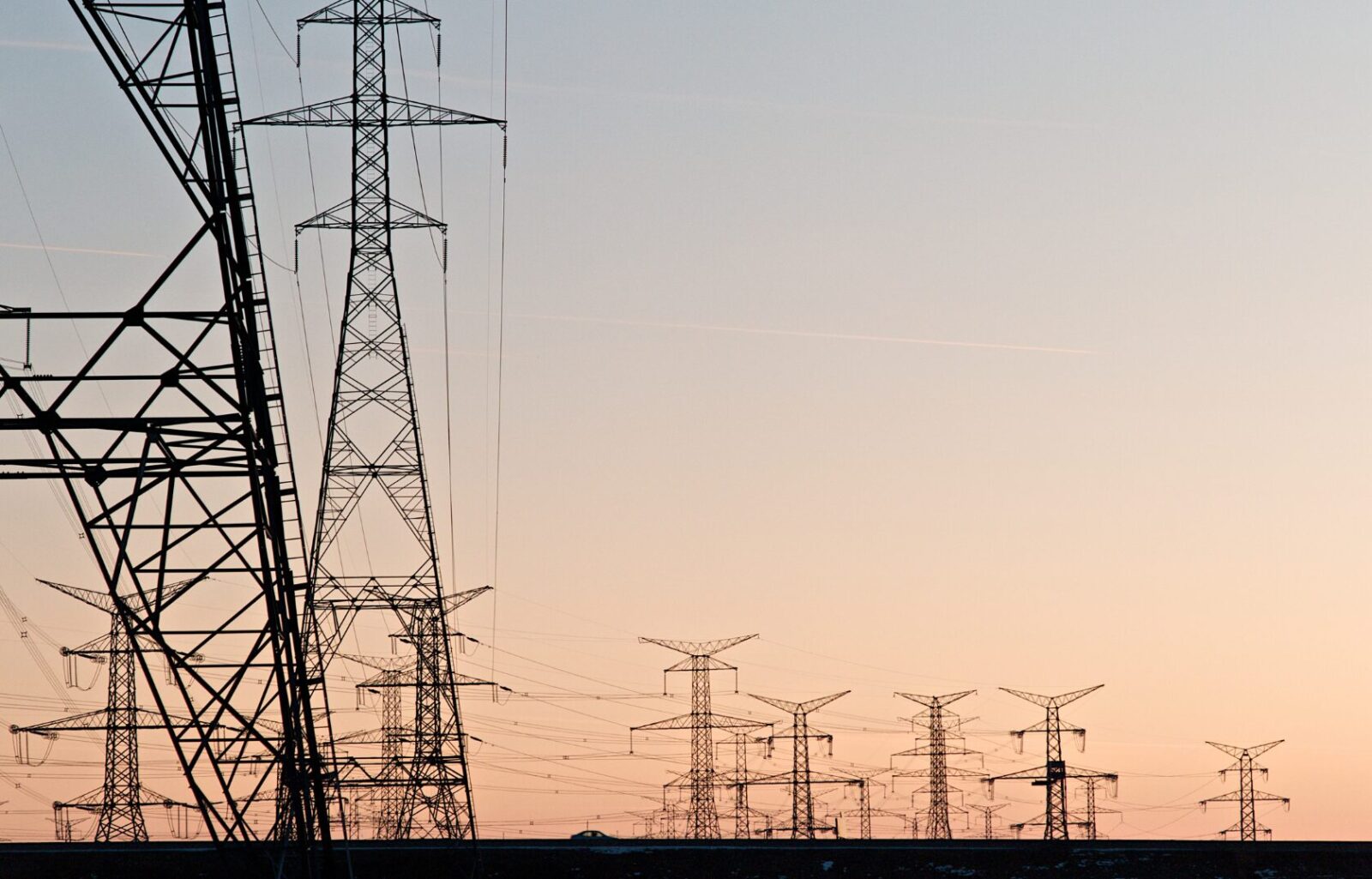
Vulnerabilities in the power sector call for safer, more sustainable battery solutions
Modern power grids face major security threats – cyber attacks, physical vandalism, and natural hazards all have the potential to throw domestic energy systems into turmoil. With a major energy transition underway and an ultimate goal to achieve net-zero emissions by 2050, the need for a resilient and secure grid is more crucial than ever.
Current efforts to move away from a centralized grid and the risks that come with it focus on enhancing distributed energy resources (DERs). DERs consist of technologies like solar PV, wind energy, and battery energy storage systems (BESS) and are versatile in where they can be sited and connected to the grid. This is vital because they provide a hedge against an expansive energy network going down from an attack.
Battery energy storage is a DER with a significant role in achieving grid security, but the lithium-ion batteries used in conventional systems present their own security risks. The issues mainly arise from their flammability and toxicity, but the lithium battery supply chain poses threats as well. As the reliance on batteries rises for their ability to flexibly manage energy from renewable sources, so does the need for alternative battery chemistries that are safe, accessible, and secure.
Current Threats to the Grid
Energy security is defined as maintaining a stable energy supply at a sustainable price, which rests on the careful management of electricity supply and demand at effectively all times. If one component of the electrical grid goes down, the ripple effect to other pieces of energy infrastructure is almost imminent. The urgency of safeguarding our power supply comes as weaknesses in a centralized grid come to light, that could be exploited by bad actors. Some of these concerns include:
Cybersecurity
Cyber attacks are happening more regularly in an interconnected world. The incidents involve people who target grid infrastructure through hacking, malware, and other cyber tactics. The outcome can be data breaches, systems overrides, and disruptions to essential services.
In early 2022, the US Department of Homeland Security issued a bulletin warning that domestic extremists want to disrupt electrical systems to create chaos. There have also been warnings of widespread blackouts, with both independent and state actors having the capability to launch these disruptions.
These concerns are not exclusive to the US, with other countries aware of similar disruptions. In April 2023, hackers successfully breached the networks of a Canadian gas pipeline. Once in, they were able to increase valve pressure, disable alarms, and make emergency shutdowns.
Physical Attacks
With many interrelated components, the power grid’s physical infrastructure also faces vulnerabilities. There are thousands of electrical substations and hundreds of thousands of miles of high-voltage power lines which leaves them susceptible to attacks, whether from vandals or domestic terrorists. These attacks can not only cause power grid outages but also large financial losses.
According to the U.S. Department of Energy (DOE), physical attacks on the grid increased by 77% in 2022. A notable example is in Moore County, NC in 2022, where an attack by armed individuals on two power substations left more than 40,000 people without power. Out of this incident, state officials have raised alarms that key infrastructure needs to be better protected to counter future attacks.
At a much larger scale, relying primarily on fossil fuel infrastructure to produce electricity comes with significant concerns, because a network of drills, refineries, and pipelines all dictate supply. This vulnerability was revealed in September 2022 when the Nord Stream pipelines suffered significant damage due to explosions, disrupting the flow of natural gas from Russia to European countries.
Natural Hazards
In addition to extreme weather events and the obvious impact they can have on the power system, the grid is also up against solar storms and electromagnetic pulses (EMPs). Solar storms occur when high-energy particles are released into space from the sun’s surface. That energy can interact with the earth’s magnetic field and interfere with technology like satellites and power grids. EMPs are intense bursts of electromagnetic energy that can be used in an attack to damage or disrupt electronic equipment and systems.
In March 2024, the Earth experienced a severe geomagnetic storm caused by a coronal mass ejection from the sun. According to the US National Oceanic and Atmospheric Administration (NOAA), infrastructure operators were informed by the agency in case of any impacts. Continued proactive measures are needed to build contingency plans and invest in innovative technologies to withstand such threats.
Lithium-Ion Batteries: Flammability and Concerns from Abroad
With the transition towards a higher mix of renewable energy sources, the role of energy storage in the future power system will become more pronounced. BESS tied to the grid that use lithium-ion batteries are popular due to their high energy density and rechargeable capabilities. However, using lithium-based batteries in critical infrastructure also poses significant concerns.
A primary concern is thermal runaway, a self-sustaining reaction that can occur when a battery’s temperature rises uncontrollably. The outcome can be explosive and a serious safety risk to personnel and infrastructure. Explosions can also happen if lithium-ion batteries in thermal runaway aren’t properly ventilated. As this phenomenon occurs, toxic gases can also be released, creating a health threat to anyone around in the vicinity.
In 2023, a fire erupted inside a battery storage container at a solar plant in San Diego County, California. Businesses and homes near the facility had to be evacuated, and a shelter-in-place order was issued. With these types of fires likely to increase as lithium-based energy storage accelerates, there may be more frequent incidents that take down energy infrastructure and present health risks.
Another security concern presented by lithium-ion batteries stems from the lack of robust domestic battery supply chains in most Western nations. Because just a handful of countries control the battery supply chain, any interruption could result in abrupt supply shortages. This is why government officials are prioritising setting up domestic battery supply chains to rebalance that control.
Lastly, there is looming concern of network infiltration via battery systems. In December 2023, Marine Corps base Camp Lejeune in the US disconnected grid-scale batteries made by leading manufacturer CATL after lawmakers raised concerns about backdoor capabilities that could be vulnerable to hacking attempts. For this scenario in which the security of a military base was at stake, the concerns translated into action. While CATL has refuted those claims, concerns persist.
A Secure Battery Future
As distributed energy resources step in to bolster aging and insecure power grids, the need for safe and domestically-produced batteries becomes more apparent. Industry leaders can address the shortcomings of current batteries with alternative solutions that are non-flammable, non-toxic, and that use sustainable materials. Emerging innovations are showing promise in meeting these criteria while maintaining performance standards.
An advantage to many alternative battery chemistries is their potential to enhance grid security. These safer alternatives do not have toxic gas emissions and are not capable of going into thermal runaway, reducing the likelihood of accidents and incidents that could disrupt grid operations and harm those living or working around them. They are also ideal for storing renewable energy and can make the grid more resilient when backup power is needed.
Addressing power grid security risks requires a concerted effort to invest in sustainable solutions, particularly regarding energy storage. By prioritizing research and development in alternative chemistries, stakeholders in the energy sector can take the steps needed to protect the power grid’s strength and security. Adoption of sustainable, domestically produced battery technology can help ensure a clean and secure energy future.




